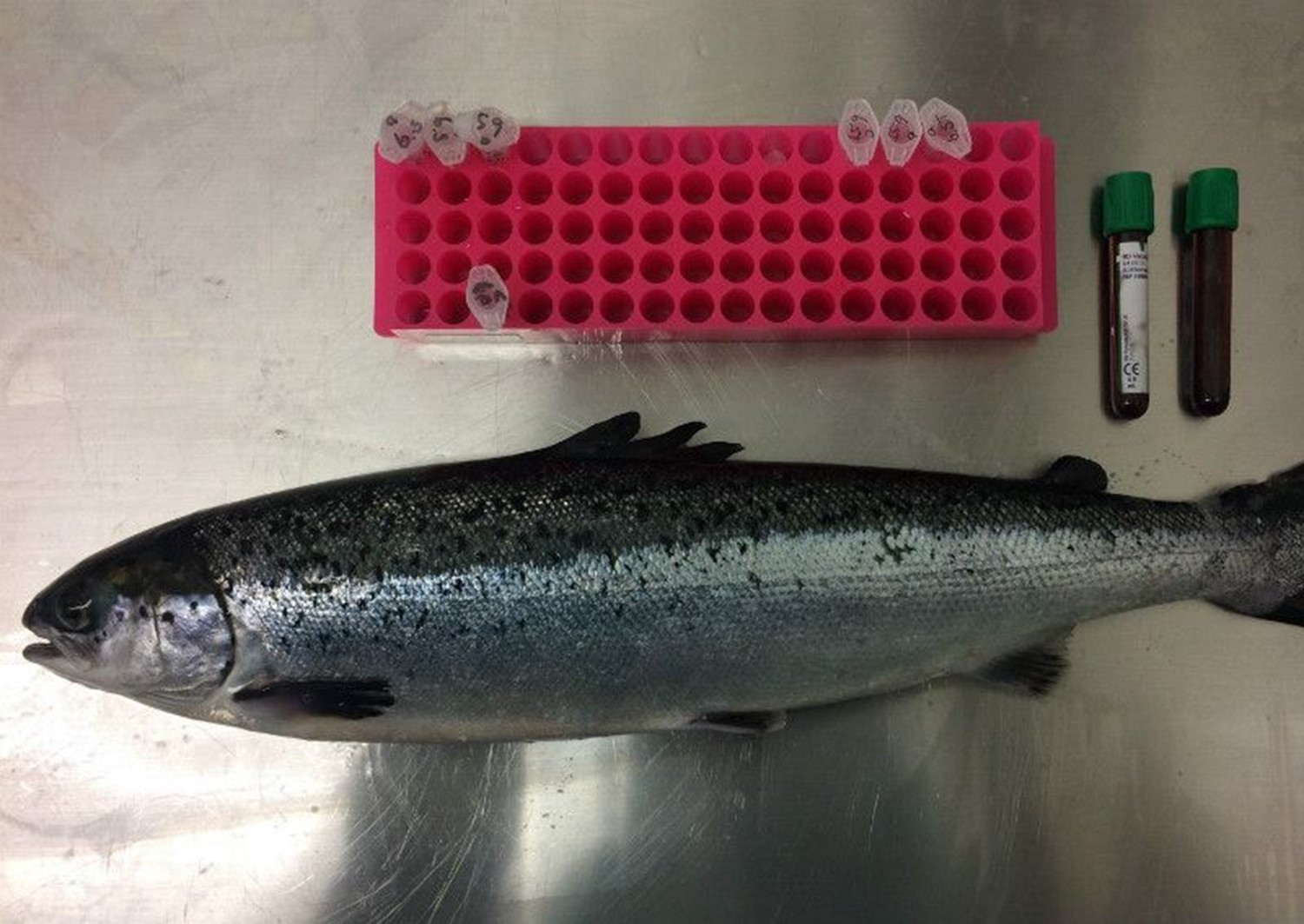RESEARCH: the last few months Fiskaaling has experimented with a new diagnostic method for stress, which shows greater consideration to the salmon and comes with less effort for those who carry out the tests. The results are very promising, since the experiments show that it is possible to attain just as accurate results with the new diagnostic method as with blood tests.
Just like stress affects the welfare and thereby the resistance in us humans, the same applies to salmon. It is no secret that stressed out salmon do not develop as well as salmon with little to no stress, which, of course, enjoy significantly better welfare. The stress levels affect the development and thereby the growth conditions of the salmon, which in turn affect the output of the aquaculture companies.
Measurements of stress in salmon are most commonly carried out by measuring the presence of the stress hormone cortisol in blood samples, in excrement, or in the water that the fish is swimming in. However, these methods of measuring come with certain limitations. For instance, blood tests are a rather difficult measuring method. There are also many stages of production whereat neither excrement nor blood nor water samples are possible to procure.
For the salmon it is a big change involving a lot of handling, when the salmon goes from the more sheltered environment on land and out to the sea, where the challenges are significantly greater. For instance, in connection with waves, currents, and the otherwise difficult weather conditions. It is a challenge for the salmon, and therefore it is important that the fish is stressed out as little as possible before and during release.
In collaboration with Luna, Fiskaaling has for the last few months developed a procedure for measuring the stress hormone cortisol in the layer of mucus found on the outside of the skin.
- This has been attempted before by some researchers abroad, although it has not progressed further than comparisons of cortisol in the mucus and in blood tests under controlled conditions, for instance in laboratories. Currently very little is being done on the Faroe Islands to measure stress in salmon. We would therefore very much like to find out whether this could be used in fish production, says Ása Jacobsen, researcher at Fiskaaling, who has overseen the development of the diagnostic method at the iNOVA laboratory.
In such cases cooperation with the industry is very important, and since spring Fiskaaling, headed by Elin Djurhuus Samuelsen, researcher, has carried out measurements of the stress hormone cortisol at Luna’s smolt farm at Fútaklettur. Cortisol was detected both in mucus and in blood collected from large smolt in connection with size sorting and delivery, which, of course, are the parts of production where the effects of stress are most significant.
- Regarding mucus, the measurement method in question has, for the most part, not been tried before. Neither on the Faroe Islands nor elsewhere in the context of production. We were therefore very excited to see what could be gained from this type of trial. The results with mucus have so far been exceedingly good because they gave us almost exactly the same picture as when blood tests are used, says Elin Djurhuus Samuelsen, researcher.
These trials have confirmed that it is possible to use the cortisol content in mucus just as well as in blood samples to assess how stressed the individual salmon is. With this new diagnostic method, it is thereby possible to quickly and easily assess salmon stress both inside the smolt farm as well as out in sea farming cages. Additionally, this can be used as a tool for improving procedures in production so that precautions are taken against unnecessary stress, which ultimately may lead to illness and unnecessary mortality.
Last summer there were likewise measurements done on mucus from salmon in Marine Harvest’s sea farm close to Haldórsvík. That test was done to assess how samples could be collected in practice at the sea farming cages and to examine what effect the anaesthetic has on the cortisol content of the mucus. The results agreed very well with the results from Fútaklettur.
- Although more trials are needed, there is no doubt that mucus measurements can be a valuable tool for diagnosing stress in salmon, and to a large extent can replace blood tests, which are both more difficult and more troublesome to carry out. With a less inconvenient diagnostic method there are good opportunities for the aquaculture companies to increase the frequency of the measurements and thereby pay closer attention to the health of the salmon both on land and at sea. Fundamentally, the tool in question is valuable, both when it comes to developing production as well as when it comes to research projects, say Elin Djurhuus Samuelsen and Ása Jacobsen.
The researchers emphasise that all of the aquaculture companies have shown interest in this opportunity, and many in the aquaculture industry wish to use this new diagnostic method both in production and in projects going forward.


